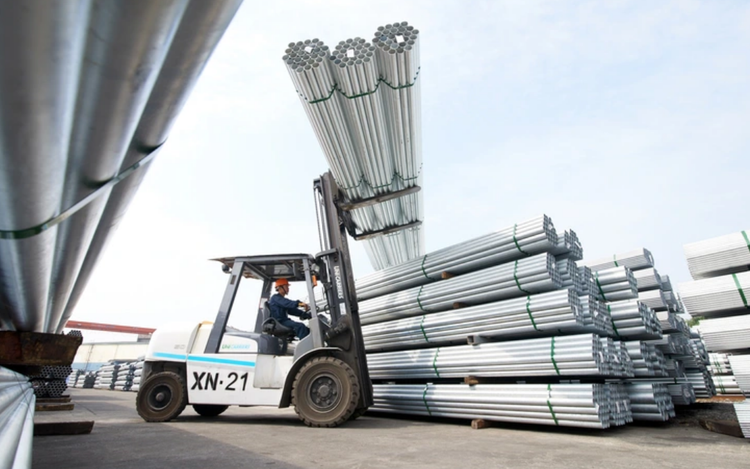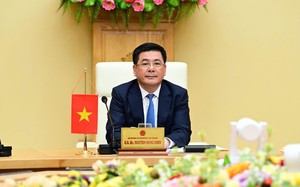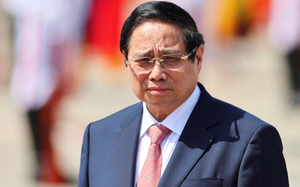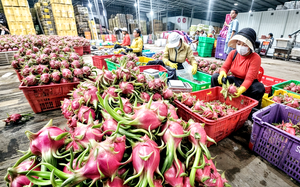
Workers at work at a steel factory in Vietnam. Photo: K. Giang / Tuoi Tre
For years, many Vietnamese companies have heavily relied on the U.S. market. Among them is Dap Cau Garment Corporation Joint Stock Company, which exports over 90 percent of its production to the United States.
However, with the looming threat of retaliatory tariffs, potentially as high as 48 percent, the company faces significant uncertainty.
Nguyen Duc Thang, chairman of the company's trade union, said that the firm’s products might no longer make it to the U.S. market if those tariffs are imposed.
“We have begun looking elsewhere, like the EU, especially after the EVFTA agreement, but the share remains small.”
The U.S. market is undeniably attractive, spending US$270 billion in annual apparel consumption.
“We’re well-acquainted with this market. Exporting there is quick and profitable, so we still prioritize it,” Thang said.
However, he emphasized the need for government-led trade missions, market intelligence sharing, and matchmaking with foreign buyers to help businesses like his expand into new markets such as South Korea, Japan, India, and the Middle East.
Nguyen Viet Thang, CEO of Hoa Phat Group, a Vietnamese leading steel exporter to over 40 countries, saw potential in the Middle East, Singapore, and Hong Kong.
Yet, he noted that while these markets have low or zero tariffs, competition is intense.
“We prioritize markets where we hold a competitive edge, particularly where high tariffs are imposed on our rivals. Vietnamese goods can then compete more effectively on price,” he said.
Leveraging free trade agreements
According to Vu Tan Cong, president of the Vietnam Chamber of Commerce and Industry, Vietnam has yet to fully tap into potential markets with favorable trade terms, such as the Middle East and Latin America, including Brazil, Argentina, Chile, and Colombia.
He underlined that both businesses and the government must proactively expand their reach to these markets.
These efforts include identifying suitable partners and tailoring products to meet the specific needs and cultural nuances of each market.
Furthermore, Vietnamese companies must better utilize the advantages provided by existing free trade agreements.
Vu Ba Phu, head of the Vietnam Trade Promotion Agency under the Ministry of Industry and Trade, told Tuoi Tre (Youth) newspaper that amidst global economic uncertainties, Vietnam has revamped its trade promotion efforts by diversifying methods and increasing flexibility to support exports to emerging markets.
However, he cautioned that entering new markets requires substantial investment.
"These markets demand updated production processes and compliance with new regulations, while both government support and corporate investment capabilities remain limited,” Phy said.
“In particular, adopting green technologies to meet global standards calls for significant capital for machinery and technological upgrades.”
New markets require time and strategy
Experts emphasized that penetrating new markets is a long-term process.
Regulatory barriers, unfamiliar policies, and high input and compliance costs pose challenges for Vietnamese exporters.
Building trust with new partners, establishing reliable logistics and finance networks, and creating efficient distribution channels all take time and effort.
Even when new buyers are found, initial orders are typically small as they test the market and evaluate the partnership's effectiveness, which can push up production costs and diminish competitiveness in unfamiliar markets.
To assist businesses, the Ministry of Industry and Trade is considering adjusting the 2025 national trade promotion program to provide timely support and help enterprises overcome obstacles as they expand into new markets.
“We are also promoting online trade connections and encouraging domestic trade and on-the-ground export promotion activities by integrating trade, tourism, and investment initiatives,” Phu said.
Vietnam is among the countries facing steep retaliatory tariffs from the United States, with a 46-percent rate, among the highest announced by President Donald Trump in early April.
According to a White House statement released April 2, President Trump would impose a 10-percent tariff on all countries starting April 5, and higher reciprocal tariffs, effective April 9.
On April 10, the U.S. president announced a 90-day pause on reciprocal tariffs for more than 75 countries, including Vietnam, as part of his broader tariff plan.
At the same time, he raised the tariff rate on China to 125 percent, effective immediately.





Max: 1500 characters
There are no comments yet. Be the first to comment.